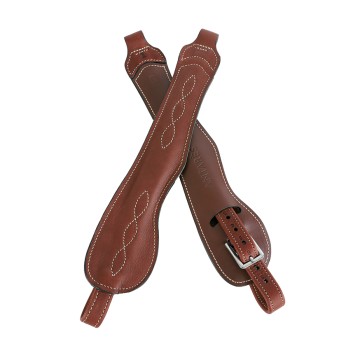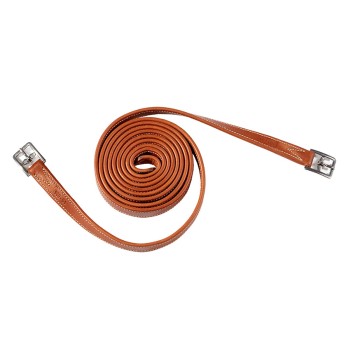Advice
How to choose your stirrup leathers ?
7 August 2022
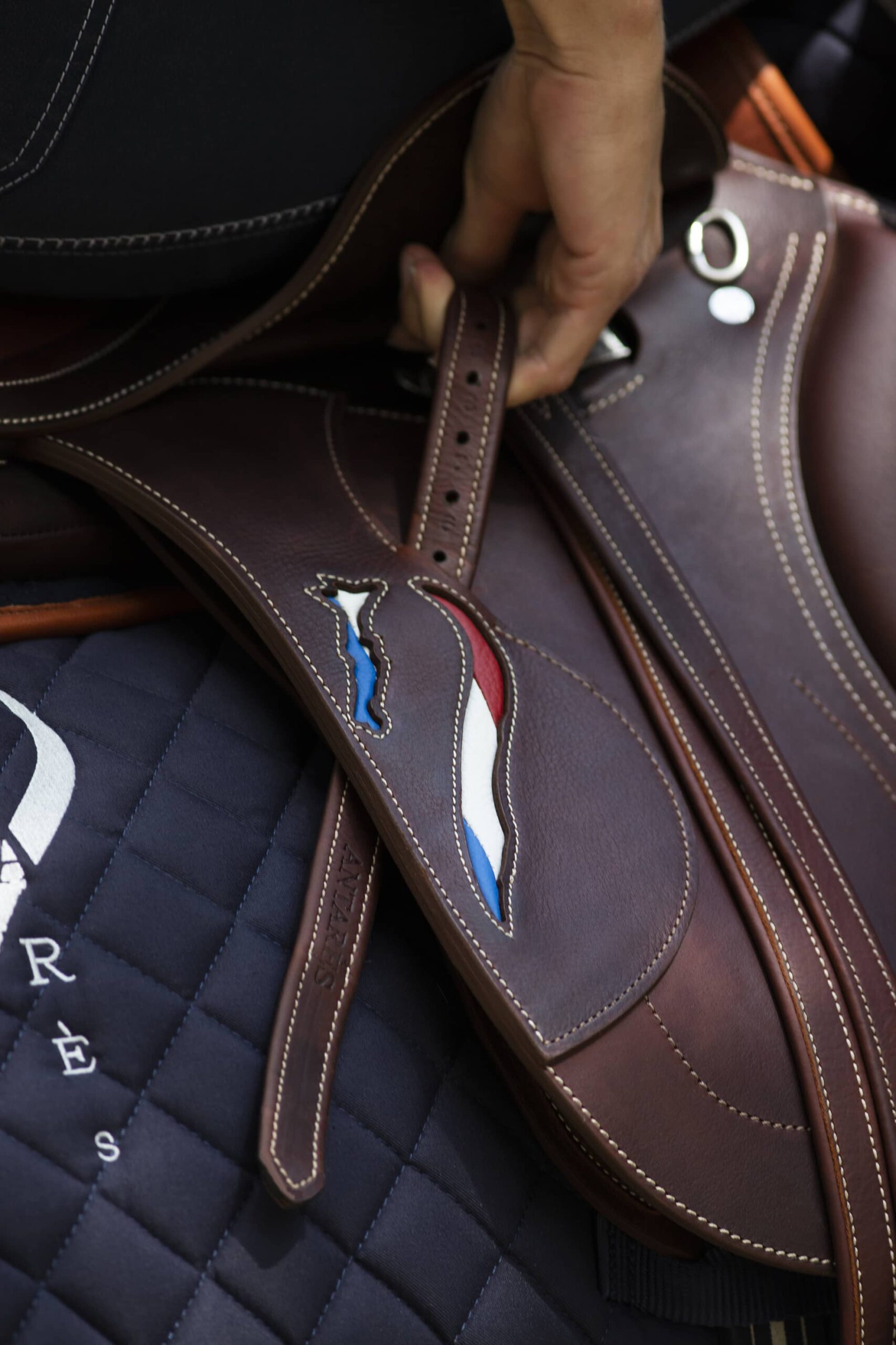
Advice
7 August 2022

As an add-on accessory to your pair of stirrups, choosing your stirrup leathers should not be taken lightly. They have to take the strain on a daily basis, including the rider’s weight and rubbing against the saddle. Premature wear and tear to your stirrup leathers or just poor quality could compromise your safety. That’s why they must be checked on a regular basis and properly maintained. Feeling that close contact with your horse must also be taken into account, which depends on how thick your stirrup leathers are. Your choice also depends on the type of riding you do. Lengths and shapes can vary to better match these. When you finally find the type of stirrup leathers that match your needs, you may still find yourself trusting to fate when choosing the size. As you can well imagine, finding the right pair of stirrup leathers is no walk in the park. So, to really get to grips with this subject, we suggest going through various models, with a highly accurate size guide and our care and maintenance recommendations.
Stirrup leathers come in several shapes, sizes or different materials. They can be:
There will certainly be a specific type of stirrup leathers for your riding discipline. Here are four of the them.
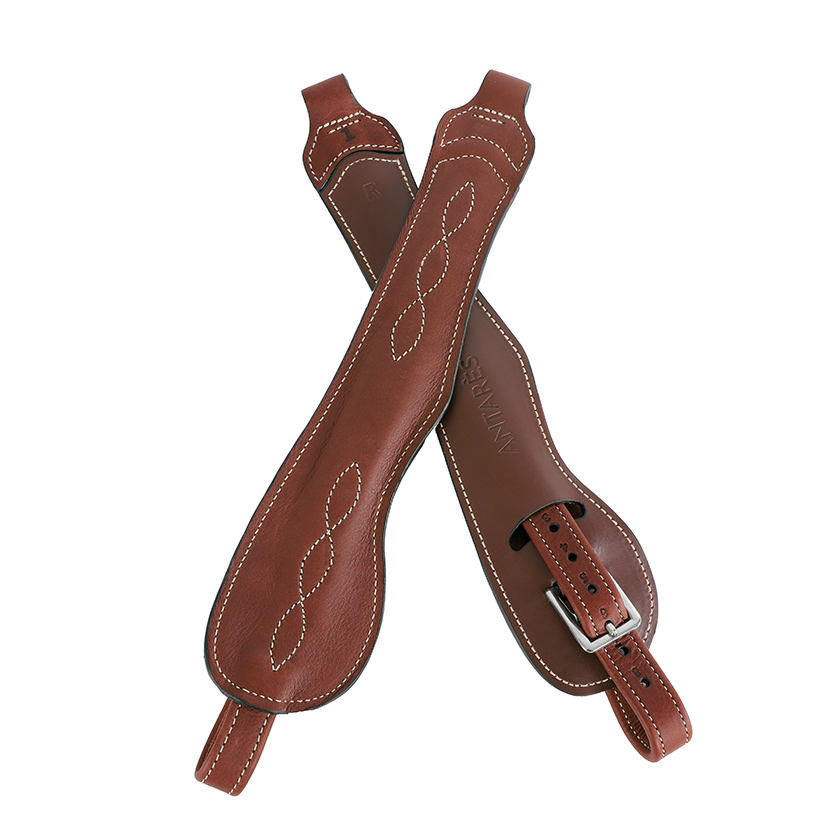
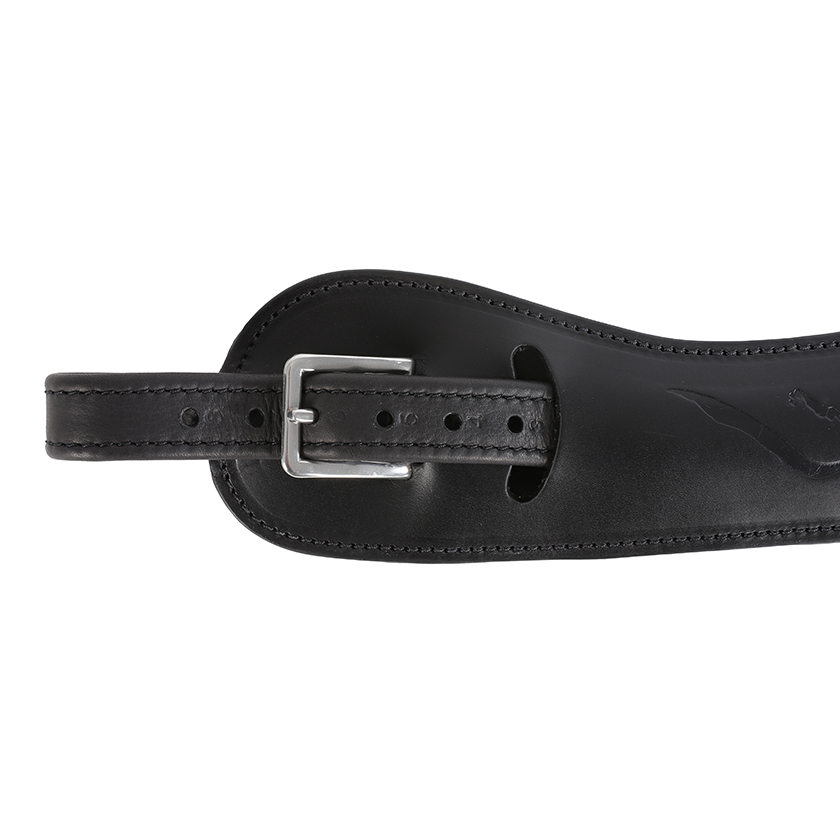
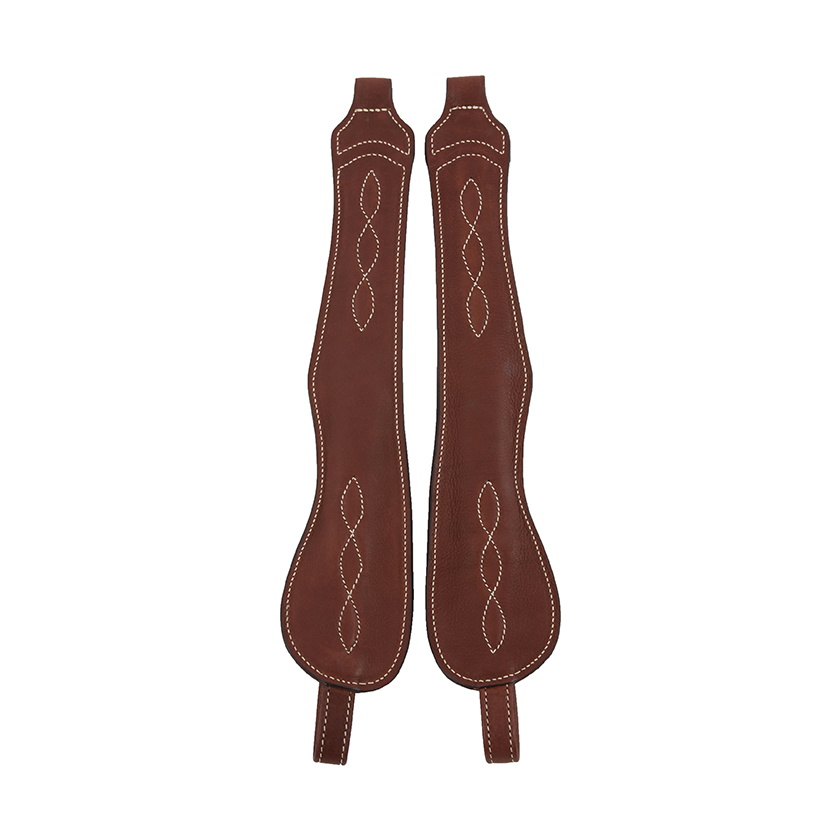
Wider than classic stirrup leathers, monostrap types allow better positioning for the rider’s leg As a result, balance is maintained and contact with the horse improved.
That’s why our new pair of monostrap stirrup leathers have been redesigned to precisely combine a perfect fit with the rider’s leg and comfort in the saddle.
Yet, you may have already tried some rather uncomfortable mono stirrup leathers. In fact, the position of the buckle can sometimes hurt the rider’s calf. Poor product design and problems with size are often the root cause of these issues. Using our guide below, you can choose the perfect size to give you comfort and flexibility when you ride.
Monostrap stirrup leathers are also great as they have no buckles on the skirts. Their low position eliminates any potential discomfort, as does the added thickness at the crotch. This doesn’t mean they can’t be quickly buckled on or removed (link) thanks to the wide stirrup bar loop on our stirrup leathers.
When you use them, your stirrup leathers have to cope with a lot of rubbing. That’s why at Antarès we’ve designed a pair of stirrup leathers with recessed stitching and a specially designed braided thread to tackle abrasion.
Also, if you’re concerned that monostrap stirrup leathers may damage your saddle, remember that the slices have been redesigned to limit saddle flap wear.


Tough and durable, this type of stirrup leathers provides a really snug fit with the rider’s lower leg. They are perfect for riding standing up on the stirrups but sometimes have the drawback of stretching.
That’s why our calfskin-lined stirrup leathers are reinforced. The nylon inserts are far less prone to stretching.
Compared to monostrap stirrup leathers, this pair has a buckle on the stirrup bar. We’ve opted for an ergonomic buckle to limit any discomfort under the rider’s leg and improved comfort in the saddle. To make them user-friendly, the tips have been made more rigid to make it easier to feed the straps through the saddle loops.
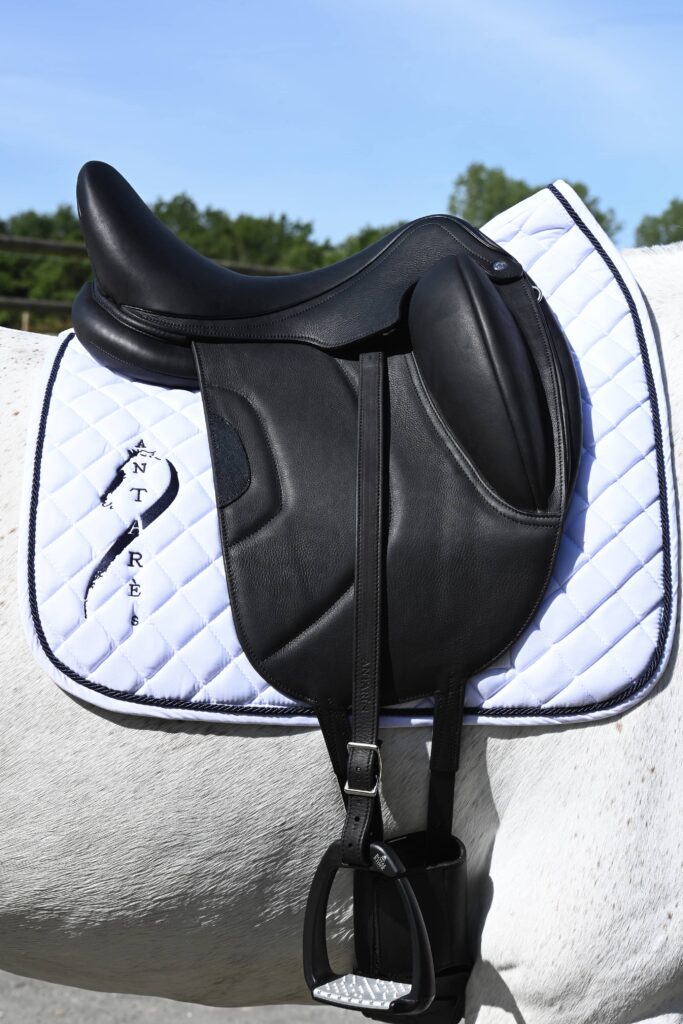

This type of stirrup leathers is adjusted at the lower leg to prevent the straps being overly thick on the thigh. This way, you have greater close contact with your horse.
Antarès dressage monostrap stirrup leathers are lined with calf leather. They also have nylon inserts to prevent stretching. The buckle to adjust them is obviously ergonomic.
They have been specially designed to meet training and performance requirements on the flat, while promoting straight legs.
The length of your stirrup leathers obviously varies according to your own size, as well as your particular riding discipline.
To help you, here’s a size guide for our stirrup leathers:
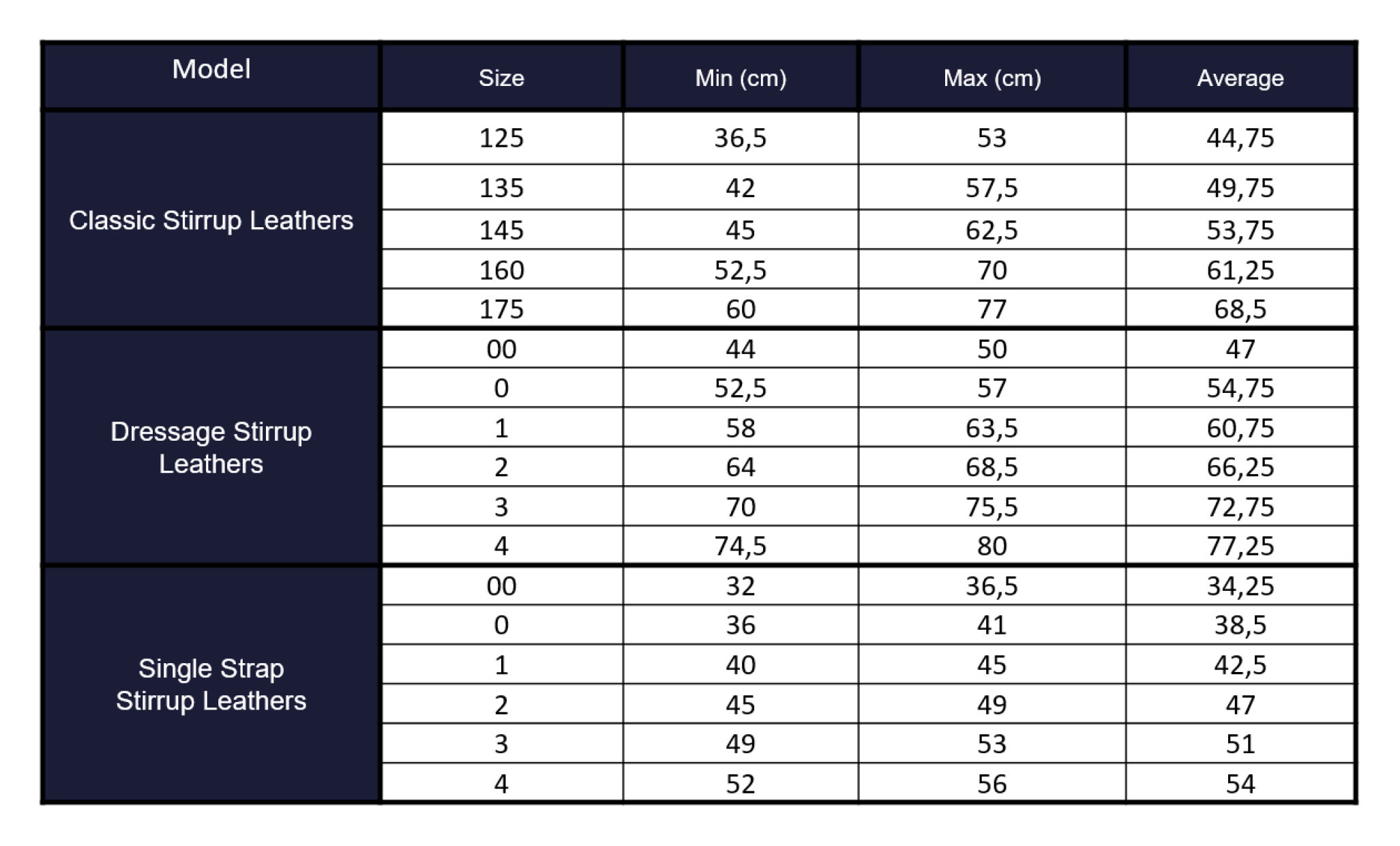
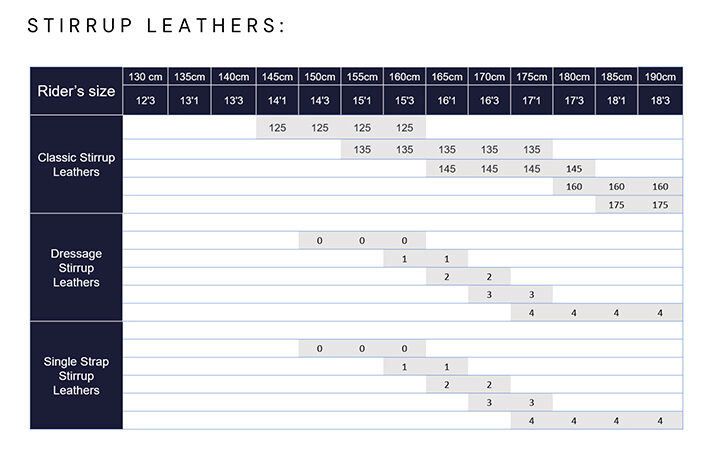
If you use a leather saddle, you’d best choose leather stirrup straps to prevent any rubbing from damaging your saddle.
You also have the option, if needed, of adding additional holes, which you can’t do with nylon straps, for example.
Stirrup leathers show signs of wear as well as tears after using them for a certain period. They start by stretching and finally snapping off. That’s why it’s very important to check them regularly and replace them when necessary.
To keep your stirrup leathers sturdy and supple, clean them each time you use them. Apply saddle soap using a wet sponge.
Hydrate your stirrup straps once or twice a month with conditioner, using a clean cloth or sponge.
It’s a good idea to oil your stirrup leathers when you get them, to darken them. This way, they’ll be a similar colour to your saddle. Also, only repeat the oiling if your pair of stirrup leathers is really dry. Oil sparingly.
[Click here for all our tips on looking after your leather products.]
This article has helped you get more familiar with stirrup leathers, the specific features found on various types and size guidelines. While choosing stirrup leathers might sometimes seem trivial compared to technical and innovative stirrups, it’s not the case. Your safety when riding also relies on their quality and care. Making the right choice of stirrup leathers will improve your leg position and balance. We urge you therefore to carefully check the state of your stirrup leathers and change them when they become too damaged.
